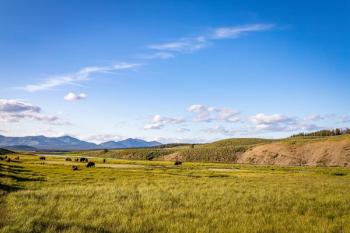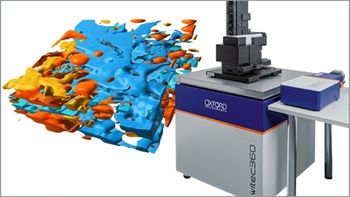
New Time Series Prediction Model Tested on Measuring Soil Moisture
Scientists from Zhejiang A&F University and Huzhou University in China recently created a new time series prediction model that combines linear and nonlinear prediction methods.
Scientists from Zhejiang A&F University and Huzhou University in China recently created a new time series prediction model that combines linear and nonlinear prediction methods. Their findings were published in Agriculture (1).
Monitoring soil moisture has become an important part of agricultural planting. Establishing an effective soil moisture prediction model can lead to better utilization of water resources, which can be significant for crop supply and overall agricultural development. Soil moisture changes can be predicted using various modeling methods, though data usually has nonlinear characteristics, which conflicts with the typical linear nature of the typical modeling methods. While the methods can address nonlinear properties of soil moisture time series, the number of parameters and empirical constants needed can be excessive. These issues compile into a need for nonlinear models; however, currently, a single nonlinear model does not obtain ideal results for soil moisture time series data when trying to measure both linear and nonlinear characteristics.
To combat this, the scientists created a hybrid time series prediction model, known as BAG (Block Hankel tensor ARIMA (BHT-ARIMA) and GRU), which combines linear and nonlinear characteristics of soil moisture. The process is based on two pre-existing models: the traditional autoregressive integrated moving average (ARIMA) method, specifically block Hankel tensor ARIMA (BHT-ARIMA), and the gated recurrent unit neural network (GRU) method. BHT-ARIMA and GRU were used to extract the linear and nonlinear features of soil moisture data, respectively. BHT-ARIMA is used to predict the linear part of soil moisture, with GRU predicting the residual series, with the final prediction result being the superposition of the two predicted results. Using this system, the proposed model was performed on five real datasets.
Compared to single linear or nonlinear models, BAG seemed to have higher accuracy for soil moisture prediction, partly due to its ability to capture the intrinsic correlation between associated environmental factors. The experiment results showed that BAG could be influenced by environmental factors and input sequence length, with correlated environmental factors also playing a key role in more accurately predicting soil moisture. Ablation experiments show that BAG can properly incorporate nonlinear characteristics of soil moisture predictions, though the influence on seasonal and climatic factors on said data are factors that require further study. Furthermore, the scientists also hope to use BAG in predicting other nonlinear time series data, such as soil temperature, rainfall, and atmospheric temperature.
Reference
(1) Wang, G.; Zhuang, L.; Mo, L.; Yi, X.; Wu, P.; Wu, X. BAG: A Linear-Nonlinear Hybrid Time Series Prediction Model for Soil Moisture. Agriculture 2023, 13 (2), 379. DOI:
Newsletter
Get essential updates on the latest spectroscopy technologies, regulatory standards, and best practices—subscribe today to Spectroscopy.





